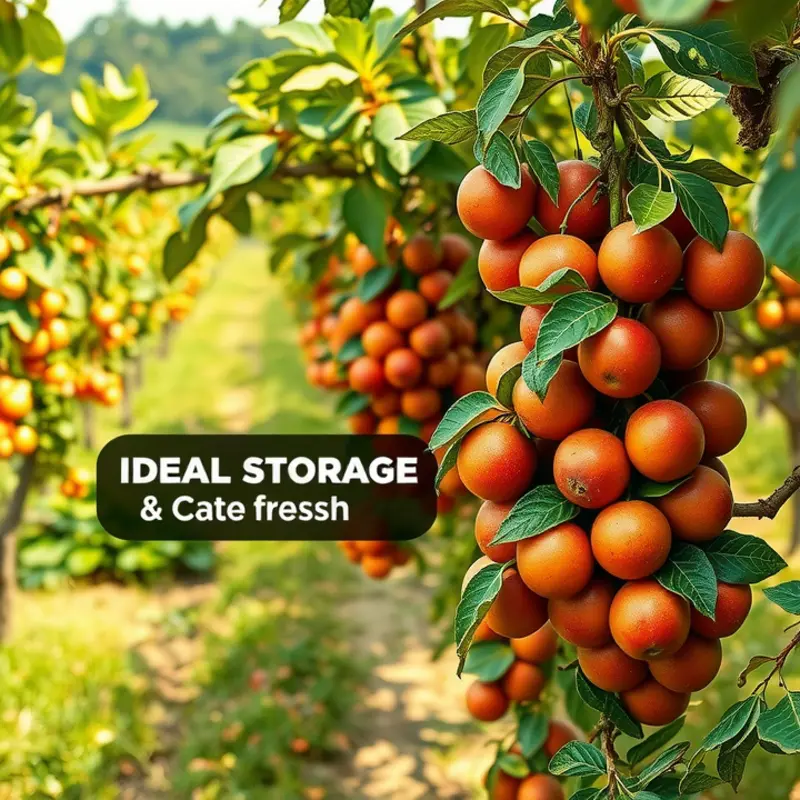Maintaining a pest-free pantry is essential for food safety and minimizing waste. Understanding proper food storage practices not only helps you keep pests at bay but also improves your overall meal management. This guide provides actionable insights and tried-and-true methods to help you safely store food while making the most of your kitchen supplies.
Understanding Pantry Pests and Their Lifecycle

Pantry pests are more common than one might think, infiltrating homes through unnoticed methods. These insects are adept at finding their way into our food supplies, causing contamination and waste. Understanding these pests and their lifecycle can make managing them far more effective.
There are a few common pests that most households encounter. Pantry moths, or Indian meal moths, are perhaps the most notorious. Their lifecycle begins when adult moths lay eggs near a food source. Once hatched, the larvae—a tiny, caterpillar-like form—feed voraciously on grains, nuts, dried fruits, and even spices. These larvae spin webs, which can spoil food and make it inedible.
Another frequent visitor is the flour beetle. Comprising species like the red flour beetle and the confused flour beetle, they thrive in dry food products. Starting life as tiny eggs, these beetles rapidly progress through larval and pupal stages. Their main target is flour and cereal products, where they can seriously affect the quality.
The cigarette beetle, despite its name, loves dried plant products, including spices and herbs. This pest has a lifecycle similar to that of flour beetles, but with a broader food preference. They are known for penetrating airtight containers, making them surprisingly tenacious.
To better manage these pests, it is vital to understand how they enter homes and storage areas. Often, they hitchhike in with infested food products bought from stores. These pests can also migrate from neighboring areas, seeking out food, warmth, and shelter.
Recognizing damage caused by pantry pests is another crucial step. Look for evidence such as webbing (from moths), small holes in packaging (beetles), or larvae on pantry shelves. Knowing their signs helps catch infestations early.
Effective reduction of pantry pests aligns well with broader food storage practices. A great starting point is minimizing waste and ensuring food safety, topics thoroughly explored in the context of sauce storage and waste reduction strategies in this guide.
Controlling these pests requires a well-thought-out approach. Start by inspecting new food upon purchase and sealing non-infested items in sturdy, airtight containers. Regularly clean shelves to remove spills and old food residues that attract pests. Consider rotating stock frequently to ensure older items are prioritized and minimize the chance of random infestations.
Understanding the lifecycle and habits of pantry pests turns an overwhelming task into a manageable one. Proper vigilance and storage strategies guard against these persistent invaders, keeping your pantry and your peace of mind intact.
Effective Food Storage Solutions

To maintain a pest-free pantry, employing airtight containers is crucial. These not only keep bugs at bay but also prolong food freshness. Sturdy materials, such as glass or high-quality plastic, minimize the risk of breakage and contamination. Label each container with contents and purchase dates, ensuring a quick inventory check.
Regularly rotated food reduces waste. Place newer items at the back and older ones in front, using the ‘first in, first out’ method. This strategy encourages the use of older products first, minimizing spoilage. For bulk purchases, consider dividing large quantities into smaller portions. This not only aids in portion control but also prevents full contamination if a pest breach occurs.
An organized pantry eliminates clutter and confusion. Group similar items together: grains, spices, canned goods, etc. This method fosters efficient access and reduces the chance of forgetting ingredients. If space is limited, consider vertical stacking or tiered shelves to maximize storage capacity while keeping everything visible.
Temperature management plays a significant role in preserving food. Most pantry staples prefer a cool, dry environment away from sunlight. High temperatures and moisture can accelerate spoilage or attract pests. Investing in a thermometer ensures optimal conditions, providing peace of mind.
Regular maintenance is key. Conduct periodic audits, checking for expired or compromised items. Clean shelves with natural solutions like vinegar, which deters pests without harsh chemicals. This habit promotes hygiene and reveals potential vulnerabilities in your storage routine.
For spices and other aromatic foods, consider custom containers that lock in flavor while keeping pests out. This approach ensures that your meals remain flavorful without risking contamination. Utilizing eco-smart kitchen storage can further enhance your pest prevention efforts.
Involving household members in organization ensures smooth operation. Share your storage strategies and encourage everyone to adhere. Consistent practice across your home leads to sustained efficiency and reduces miscommunication. Employing these solutions not only keeps your pantry pest-free but also significantly reduces food wastage over time.
Final words
Implementing proper pantry pest control strategies is crucial for maintaining a healthy and efficient kitchen. By understanding the types of pests and their lifecycle, you can proactively reduce their presence. Coupled with effective food storage solutions, these methods not only safeguard your food but also significantly minimize waste. A well-organized pantry furthers your efforts by making it easier to track expiration dates and use ingredients promptly. Take charge of your pantry; your taste buds and your budget will thank you!







